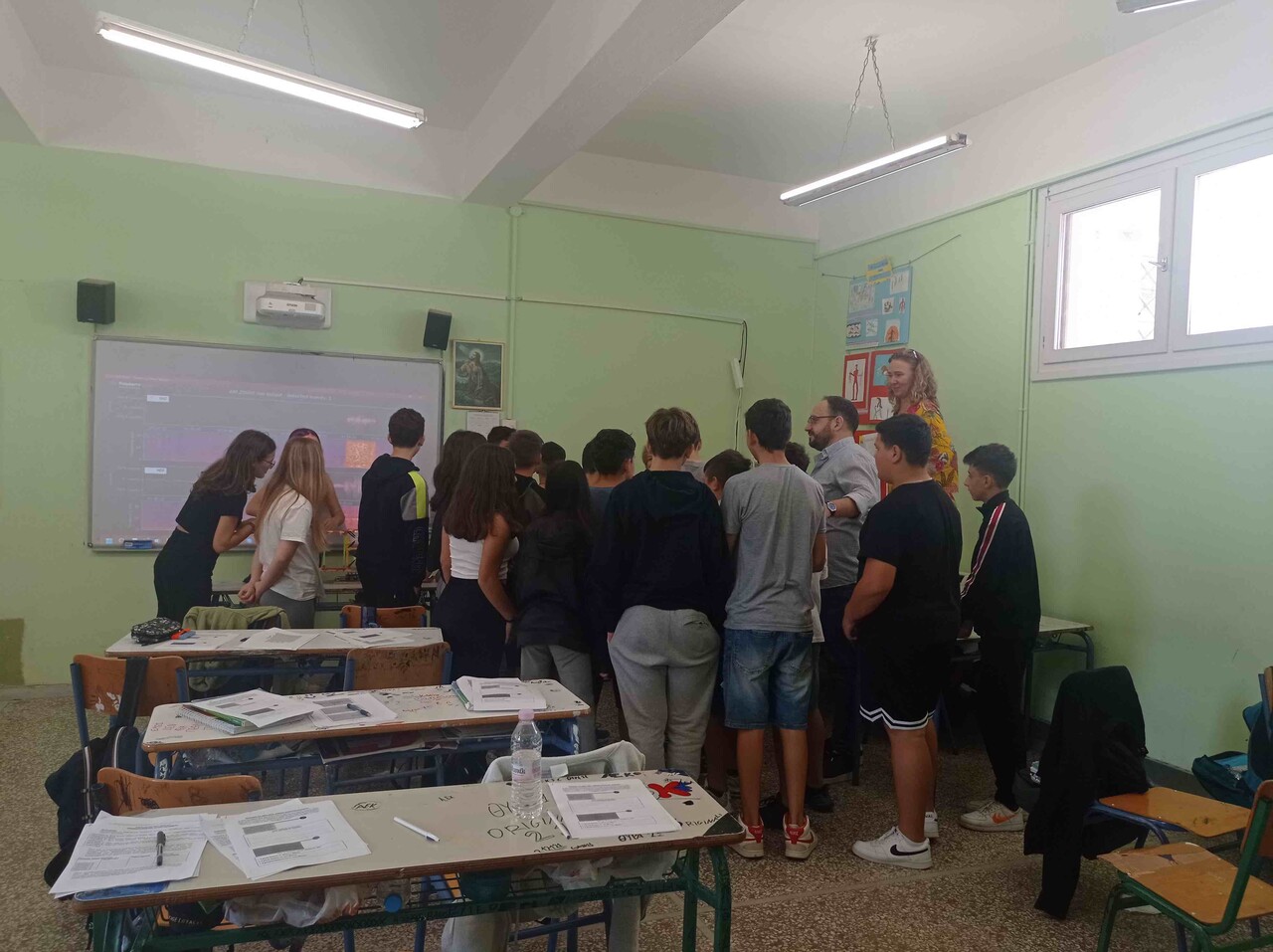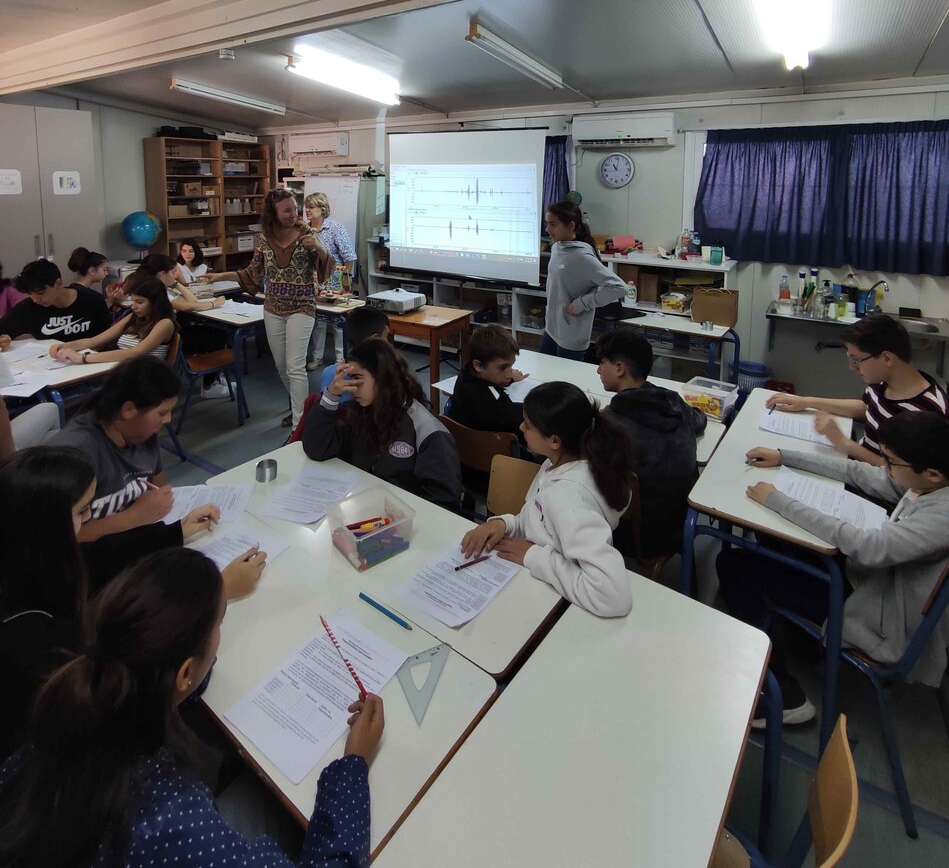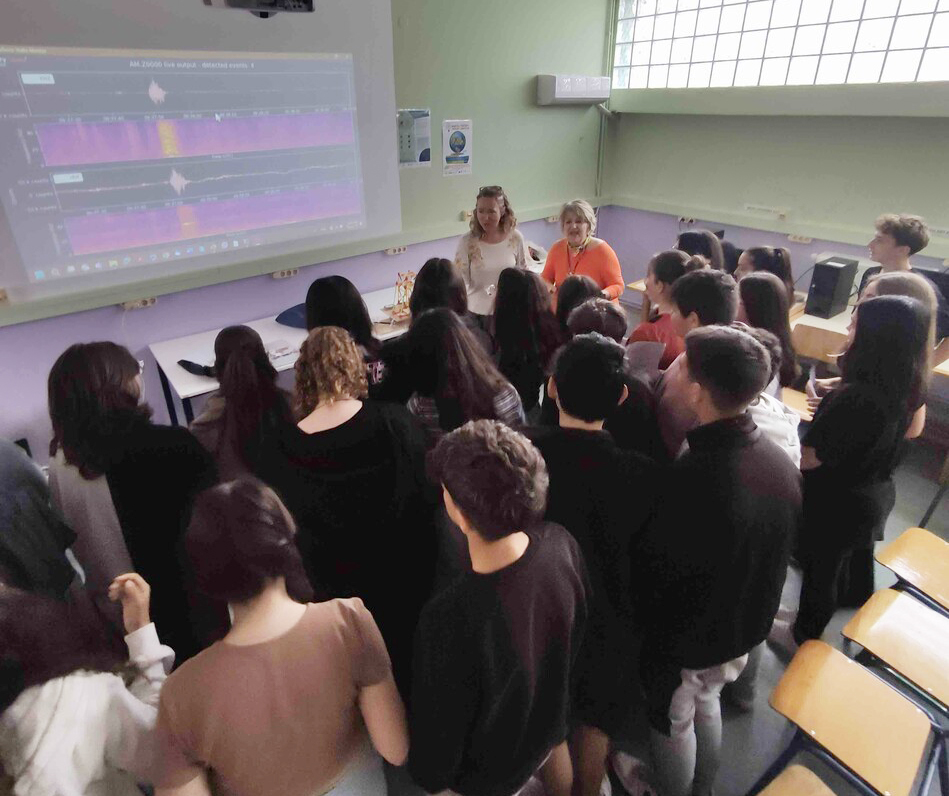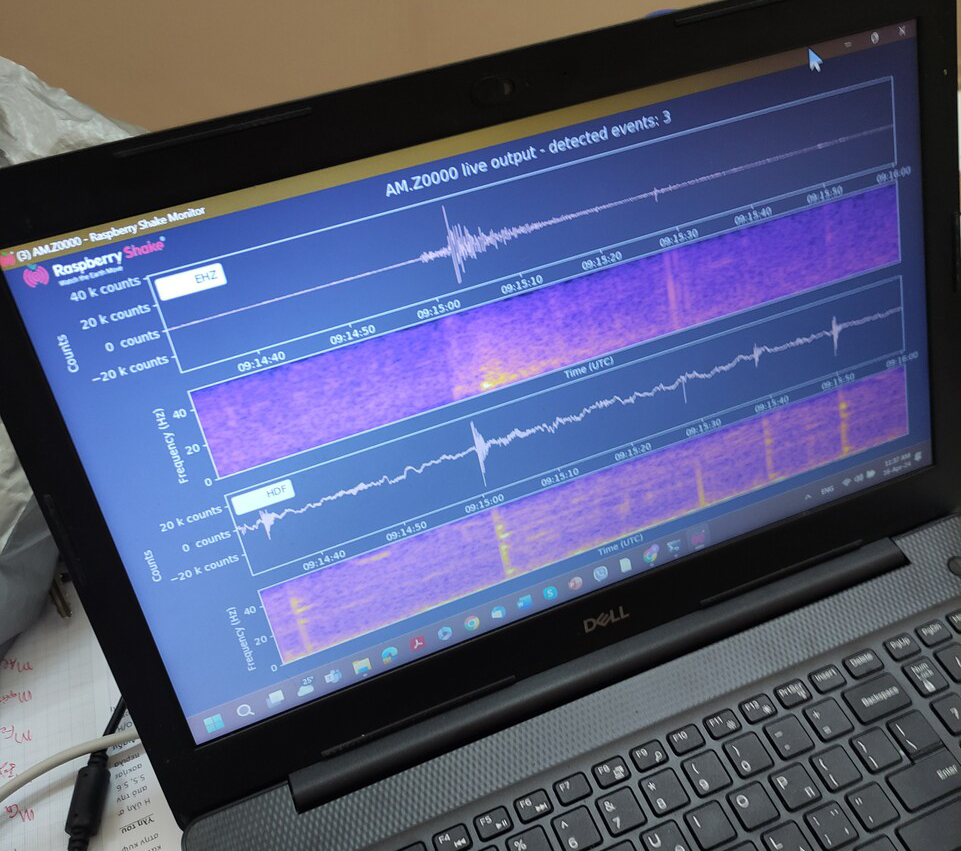Earthquake Interruption: A Live Data Lesson with the Raspberry Shake and Boom
Article by Heather Ridge, Vicki Kouskouna and Nikolas Galanos.
Students at Argostoli 1st Junior High School on the island of Cephalonia, Greece are experts on earthquakes. Living in one of Europe’s most seismically active spots, they know how earthquakes occur and how to stay safe during and after a quake. On April 16th, they were learning how to read seismograms and were excited to use the live data on seismic activity thanks to the Raspberry Shake and Boom device visiting their school that day. Little did they know how “live” that data would be!

In the middle of the lesson, a 2.4-magnitude earthquake shook the island, and gave students and the instructors a seismogram they could use and share with researchers all around the world.
The Raspberry Shake and Boom is a seismograph designed to detect and measure seismic activity. Equipped with both a geophone for detecting ground vibrations and an infrasound sensor for capturing atmospheric pressure waves, this device is a powerful tool for understanding the dynamics of earthquakes and volcanic eruptions. For the students at Argostoli 1st Junior High, it promised to be a gateway to exploring the invisible forces that shape their daily lives and allow them to see live data from other seismic activity around the world.

Thanks to the Global Teacher Grant, an award for Fulbright alumni funded through the U.S. Department of State and administered by IREX, science teacher Heather Ridge, from Boulder, Colorado, and seismologist Prof. Vasiliki Kouskouna and Nikolas Galanos, from the National and Kapodistrian University of Athens were able to travel to schools across Cephalonia and Ithaca to show students how the Raspberry Shake and Boom device measures seismic activity and connects them to live data through Shakenet. The grant provided for lessons in nine different schools and taught students about primary and secondary waves, how to read a seismogram, how to triangulate an earthquake, and how to stay safe during and after an earthquake using information and supplies from the “earthquake suitcase.” This suitcase is a traveling laboratory that includes a shake table with model buildings of different vulnerabilities, an accelerograph to record the simulated shaking, the “earthquake emergency kit”, the “emergency family plan” and books and games on earthquakes.

As the lesson started, students were asked to stamp their feet and make predictions about how distance and magnitude might impact the results captured by the Raspberry Shake and Boom. They watched intently as Mr. Galanos connected the device to his laptop, displaying real-time data on the screen. Tiny wiggles and waves represented the Earth’s constant but often imperceptible movements. After getting the chance to create their own waves, students were returning to their seats when a doorbell noise from the Raspberry Shake and Boom alerted them to a surprising guest. An earthquake!
The students’ eyes widened, and they looked at each other in confusion.
It was a real earthquake, right in the middle of their lesson about earthquakes! Everyone watched the screen. The seismogram showed the dramatic spikes, capturing the moment the Earth had moved beneath their feet. As the earthquake was a small magnitude offshore event, they had not felt it, but it was recorded by the Raspberry Shake and Boom.
The real-life demonstration left a lasting impression on the students. The Raspberry Shake and Boom had not only provided an unforgettable educational moment but also underscored the importance of sharing data and their role as citizen scientists. It also highlighted the incredible potential of technology to educate and protect. The Raspberry Shake and Boom had turned a moment of fear into a lesson of awe and understanding, a lesson that those students would carry with them for the rest of their lives.
